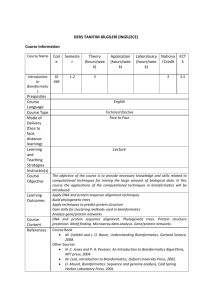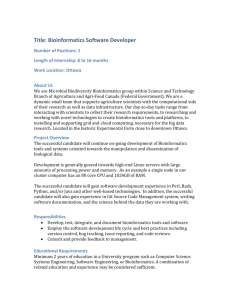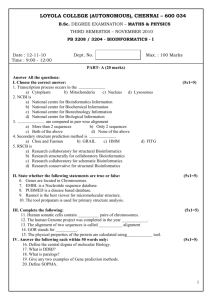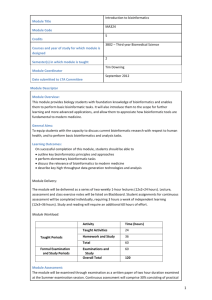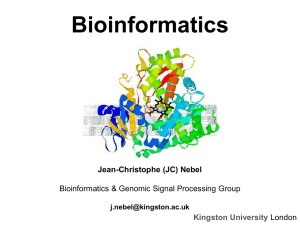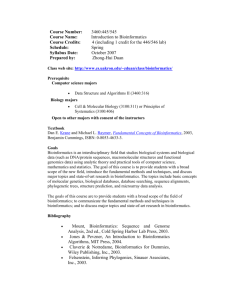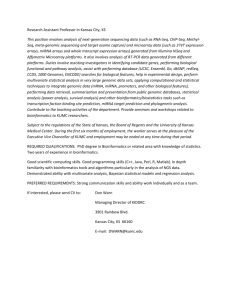Master Syllabus - Computer and Information Sciences
advertisement
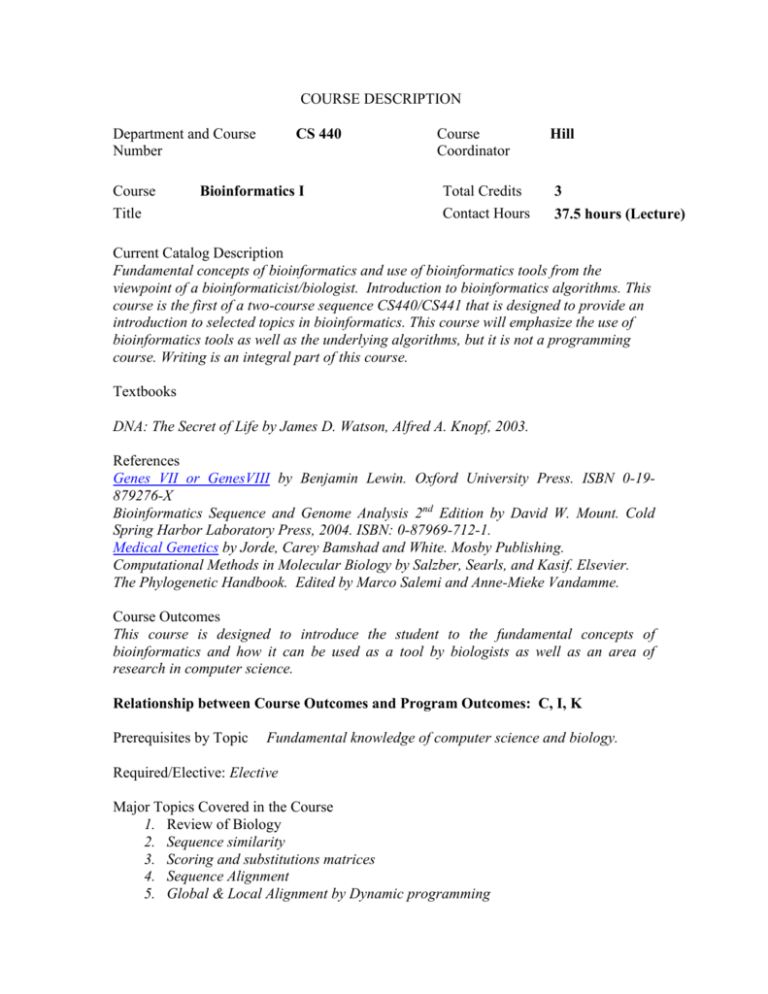
COURSE DESCRIPTION Department and Course Number Course Title CS 440 Bioinformatics I Course Coordinator Total Credits Contact Hours Hill 3 37.5 hours (Lecture) Current Catalog Description Fundamental concepts of bioinformatics and use of bioinformatics tools from the viewpoint of a bioinformaticist/biologist. Introduction to bioinformatics algorithms. This course is the first of a two-course sequence CS440/CS441 that is designed to provide an introduction to selected topics in bioinformatics. This course will emphasize the use of bioinformatics tools as well as the underlying algorithms, but it is not a programming course. Writing is an integral part of this course. Textbooks DNA: The Secret of Life by James D. Watson, Alfred A. Knopf, 2003. References Genes VII or GenesVIII by Benjamin Lewin. Oxford University Press. ISBN 0-19879276-X Bioinformatics Sequence and Genome Analysis 2nd Edition by David W. Mount. Cold Spring Harbor Laboratory Press, 2004. ISBN: 0-87969-712-1. Medical Genetics by Jorde, Carey Bamshad and White. Mosby Publishing. Computational Methods in Molecular Biology by Salzber, Searls, and Kasif. Elsevier. The Phylogenetic Handbook. Edited by Marco Salemi and Anne-Mieke Vandamme. Course Outcomes This course is designed to introduce the student to the fundamental concepts of bioinformatics and how it can be used as a tool by biologists as well as an area of research in computer science. Relationship between Course Outcomes and Program Outcomes: C, I, K Prerequisites by Topic Fundamental knowledge of computer science and biology. Required/Elective: Elective Major Topics Covered in the Course 1. Review of Biology 2. Sequence similarity 3. Scoring and substitutions matrices 4. Sequence Alignment 5. Global & Local Alignment by Dynamic programming 6. 7. 8. 9. Multiple Sequence Alignment Phylogenetics Genomic Annotation BLAST Laboratory projects Students are required to perform a number of exercises using web-based bioinformatics tools and to write a short summary of each. Criterion 3 Student Outcomes Outcome a An ability to apply knowledge of computing and mathematics appropriate to the discipline b An ability to analyze a problem, and identify and define the computing requirements appropriate to its solution c An ability to design, implement, and evaluate a computer-based system, process, component, or program to meet desired needs d An ability to function effectively on teams to accomplish a common goal e An understanding of professional, ethical, legal, security and social issues and responsibilities f An ability to communicate effectively with a range of audiences g An ability to analyze the local and global impact of computing on individuals, organizations, and society h Recognition of the need for and an ability to engage in continuing professional development i An ability to use current techniques, skills, and tools necessary for computing practice j An ability to apply mathematical foundations, algorithmic principles, and computer science theory in the modeling and design of computer-based systems in a way that demonstrates comprehension of the tradeoffs involved in design choices. k An ability to apply design and development principles in the construction of software systems of varying complexity. Oral and Written Communications None Social and Ethical Issues None X X X




